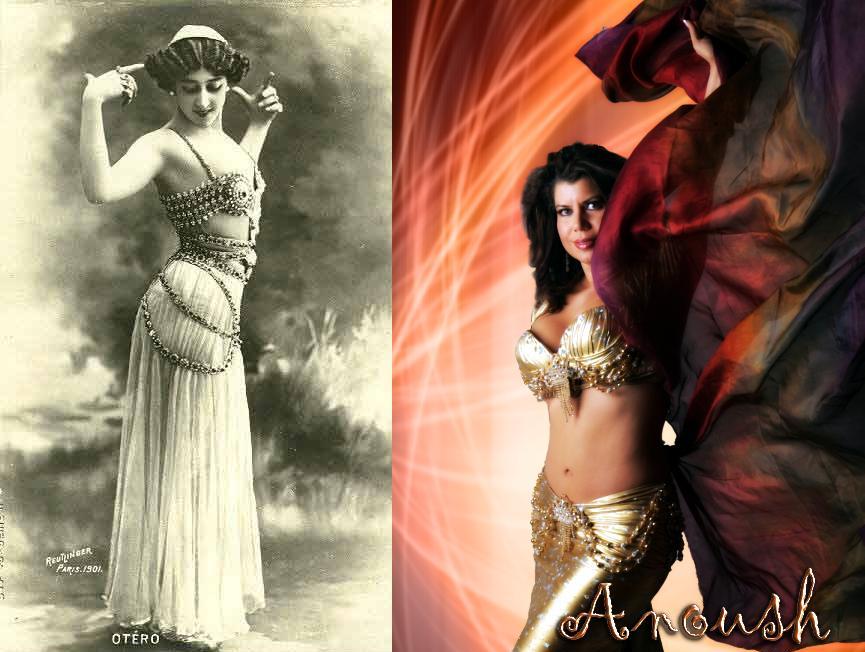The captivating art of belly dance, also known as Oriental dance, came to the West during the height of what was called Orientalism (ca late 1800s), when artists, writers and travelers were fascinated with the culture of what was then called the Orient. Flaubert's paintings, Fitzgerald's translation of the Rubaiyat of Omar Khayyam, and the tale "The Arabian Nights" are just a few of the expressions of this fascination that are still popular today.
In the Middle East, people have always danced to entertain themselves, and there is a class of professional dancers who have traditionally been hired to perform at weddings and other celebrations. In the West, dance is taught formally in classes; in the Middle East, children learn to dance as early as they learn to walk, from relatives and friends at social gatherings.
Belly dance itself came to the United States at the Chicago World's Fair of 1893, with the appearance of the dancer Little Egypt. Much of the audience was entranced, and consequently, many of the dance moves were picked up by various venues such as vaudeville and burlesque shows.
It also found enough true students that it has evolved into a performing art in the West, and of course, it was in constant refinement in its homeland, the Middle East, where it is known by the name Raks Sharki. Authentic teachers were brought from Egypt and elsewhere to teach. Dedicated artists in the West set about researching and documenting Oriental dance, as well as teaching classes.
The last two decades have seen a revival in the interest in belly dance. With the advent of the Information Age, people are again becoming interested in belly dance. Oriental dance artists are suddenly in demand for their knowledge and expertise, and new scholars and instructors are emerging. Today Oriental dance artists and practitioners can be found worldwide, from Australia to Japan, and from Europe to the Americas.
The movements of belly dance are quite distinct from western dance forms. Instead of large traveling steps, and leaps and jumps to travel across large performance space, you see small movements, making use of the torso and especially the hips. Subtlety is the key here, with a belly dancer often making use of a small dance space (as opposed to the large stage usually seen in ballet) and creating small, intricate movements, enhancing the music.
Belly dance is distinctly rooted in the music itself. Watch any experienced dancer, and you will see that her performance is a tangible expression of the music being played. Arabic music has many nuances, from complex rhythms to a larger range of notes from which to draw its compositions. The belly dancer draws from this complexity to create her performance, whether it be an improvised performance or choreographed one.
If you come upon a traditional belly dance performance, often you will see a multi-part routine. A common pattern followed is for a dance to have five parts, starting with a quick paced introduction, moving into a traditional Arabic melody (often a rumba rhythm), followed by a "taksim" (slow, improvised piece), then a faster rhythm called a Balady, a Tabla (drum) solo and finally a finale.
While there are many Oriental dance artists who consistently use traditional and classical dance music today, one also sees outside influences. Both new compositions are used as well as new arrangements of traditional and popular songs. Some performers use modern, western music in their performances while others use modern Middle Eastern compositions.
Belly dance ranges from solo dancers, either in an improvisational or choreographed style, to ensembles of dancers with choreography. Today, belly dance is a way for people to entertain themselves, as well as a dance of professional presentations and trained soloists.
Ann "Roxann" Sabin
